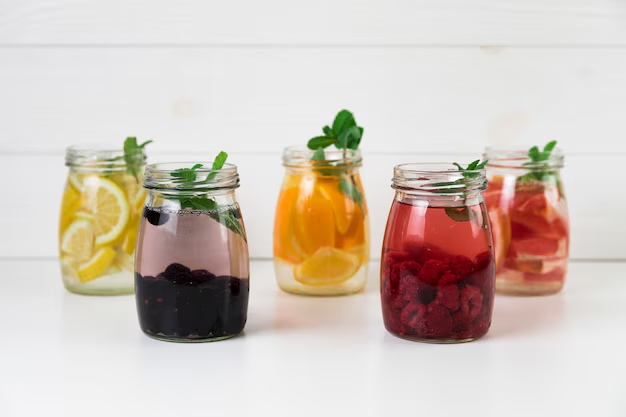How Long Do Sweet Pickles Last in the Refrigerator?
Open your refrigerator, glance at that jar of sweet pickles sitting quietly at the back, and a question might pop up: how long are they actually good for? Descriptions on the label may provide a “best by” date, but there's more to understanding pickle longevity than just a printed number. In this article, we'll embark on an exploration of sweet pickles’ shelf life, providing practical insights to ensure you're making the most out of your tangy treats while keeping safety in check.
🥒 Understanding the Basics: What Are Sweet Pickles?
Types of Pickles
Pickles come in a variety of types, fermenting or brining cucumbers to preserve them and intensify their flavor. Sweet pickles, specifically, are cucumbers that have been pickled in a solution containing sugar, which results in their distinctively sweet flavor. Common varieties of sweet pickles include:
- Bread and Butter Pickles: Known for their balance of sweet and tangy.
- Candied Pickles: Typically sweeter and spicier than other types.
- Sweet Gherkins: Small, crunchy, and often used in snack trays.
How Are Sweet Pickles Made?
Sweet pickles undergo a process involving brining cucumbers in a sweet, vinegar-based solution. This process not only imparts flavor but also significantly increases their shelf life due to the acidic and sugary content, which inhibits bacterial growth.
🕰️ Shelf Life of Sweet Pickles in the Refrigerator
Unopened vs. Opened Jars
Unopened Jars: When stored properly in a cool, dark place, unopened jars of sweet pickles often last beyond their "best by" date, sometimes even up to a year or more. Once opened, though, the shelf life changes significantly.
Opened Jars: Once exposed to air, opened jars of sweet pickles last about 1 to 3 months in the refrigerator. The vinegar and sugar content continue to preserve them against spoilage, but exposure can gradually degrade flavor and texture.
Signs of Spoilage
Knowing when sweet pickles have gone bad can prevent unpleasant experiences. Here are several key indicators:
- Off Smell: If you notice a sour or foul odor, it's time to discard the pickles.
- Discoloration: Sweet pickles that are significantly darker or have a cloudy appearance require caution.
- Mold: Visible mold on the surface or lid is a definite sign to throw them away.
- Texture Changes: Some loss of crunch is expected, but extreme softness indicates spoilage.
🌡️ Optimal Storage Practices to Extend Shelf Life
Storing Guidelines
- Seal Tightly: Always ensure the pickle jar is tightly sealed after each use to minimize exposure to air.
- Keep Cool: Store jars in the refrigerator, usually at temperatures below 40°F (4°C).
- Avoid Cross-Contamination: Use clean utensils to prevent introducing bacteria into the jar.
Placement Tips
- Store Away from Light: Place the jar in the refrigerator's middle or back to avoid light exposure, which can accelerate spoilage.
- Avoid Refrigerator Door: The less temperature-stable environment of the door is not ideal for pickles.
🔍 Exploring Related Subtopics: A Deeper Dive
Factors Influencing Pickle Longevity
Various factors influence how long sweet pickles can last, such as:
- Preservation Ingredients: Amounts of vinegar, sugar, and preservatives notably impact shelf life.
- Opening Frequency: Frequent opening of the jar can introduce air and reduce freshness.
- Homemade vs. Commercial: Homemade sweet pickles might have different longevity due to varied preservation methods compared to commercially-produced counterparts.
Benefits of Proper Storage
Proper storage isn't just about preventing spoilage; it also affects:
- Flavor Retention: Correct practices maintain desirable flavors.
- Texture Preservation: Ensures that pickles remain crunchy.
Alternatives to Sweet Pickles
Exploring other types of preserves expands your taste and storage options:
- Sour and Dill Pickles: Offer a tangier flavor and may have similar preservation requirements.
- Pickled Vegetables: Broaden your choices with pickled onions, beets, and carrots.
📋 Quick Tips Summary
Here’s a handy guide to help you keep sweet pickles fresh and tantalizing:
- 🔐 Seal It Right: Preserve freshness by ensuring jars are sealed after each use.
- ❄️ Chill Consistently: Store in the refrigerator at stable, cool temperatures.
- 👁️ Check Before You Chew: Always examine for any signs of spoilage before consumption.
- 🥄 Use Clean Tools: Prevent cross-contamination by using clean utensils.
🤔 What If They Go Bad? Safe Disposal
When sweet pickles have visibly spoiled, disposing of them safely ensures no regrets or health concerns:
- Seal and Toss: Dispose of spoiled pickles by bagging them before tossing to prevent any odors from dispersing.
- Avoid Drain Disposal: Disposing via drains might cause clogging or odor.
✨ Final Thoughts
Sweet pickles are more than a pantry staple; they're a culinary delight that, with proper care, can zest up meals for months. With this guide, you now hold the keys to extending their lifespan, savoring their flavor, and ensuring safety every bite along the way. Remember to store them wisely, check them routinely, and relish the sweet-tangy crunch knowing you're well-prepared. Whether you're a seasoned pickle lover or a curious culinary explorer, sweet pickles, with their complexity of flavors, enrich the simple joys of any meal. 🥒✨
